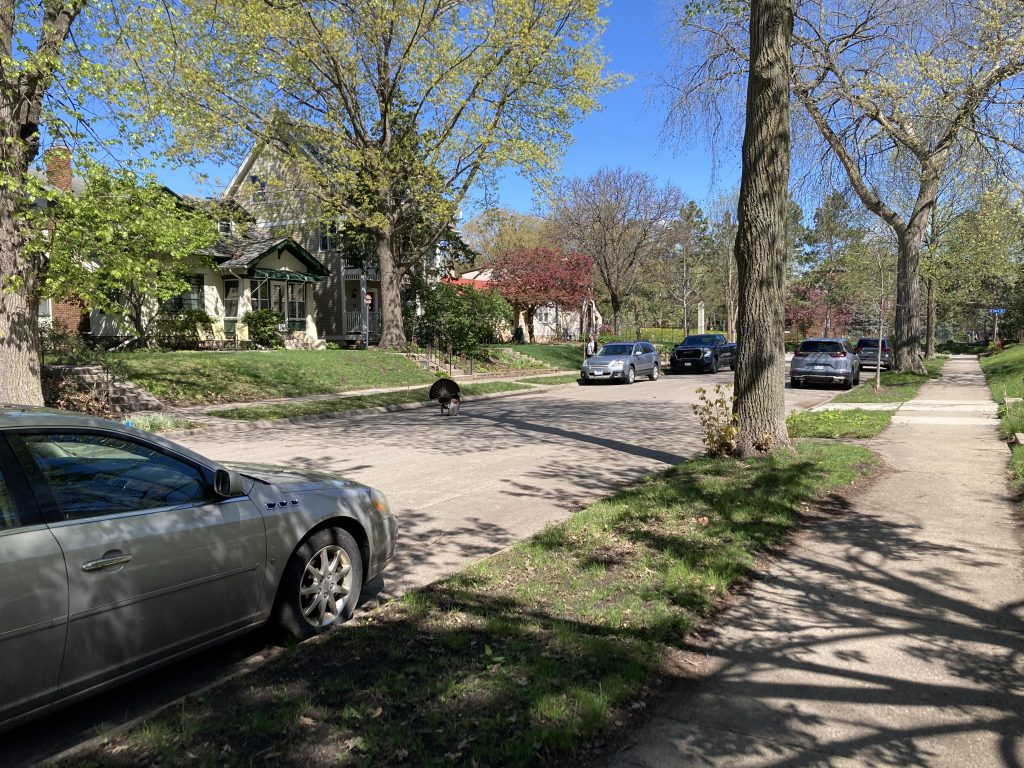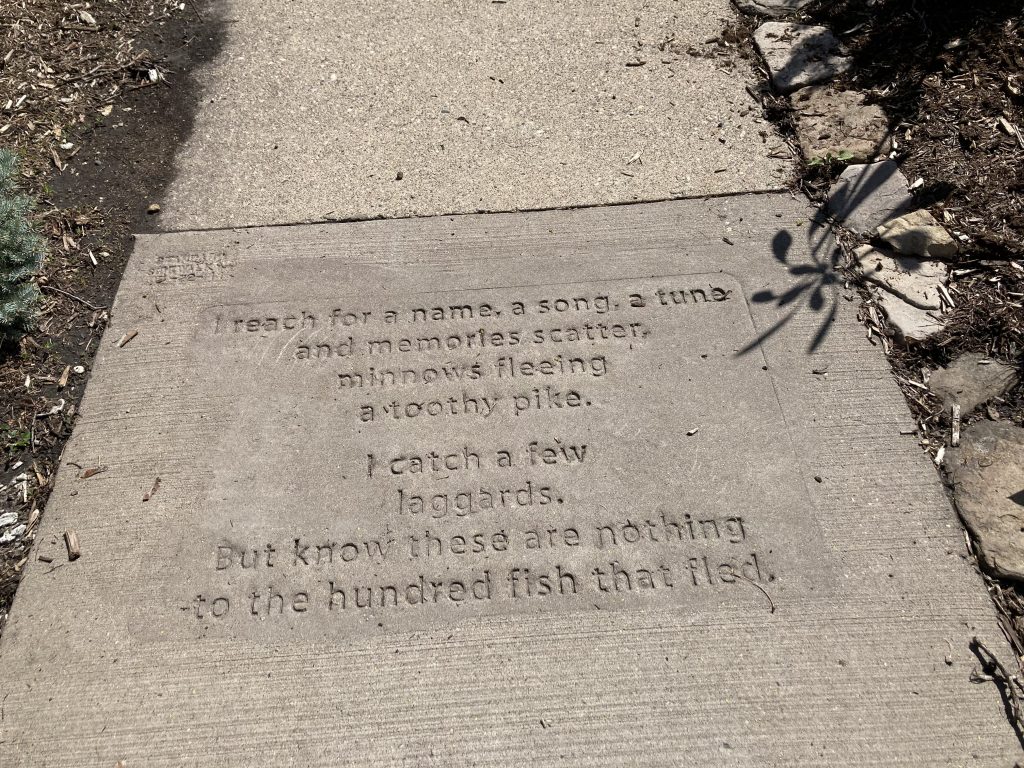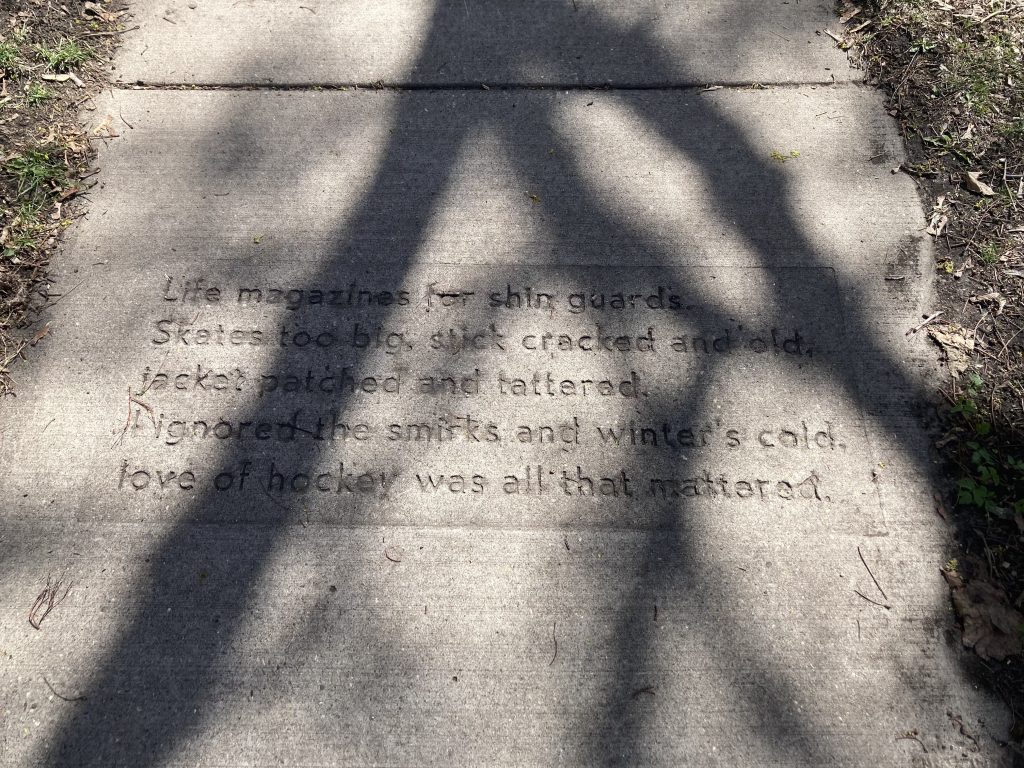3.1 miles
turkey hollow loop
60 degrees
Late morning felt hot today. Bright sun, not much shade. The river road was closed off for the annual Walk MS charity event so I ran on the dirt/mud trail between it and edmund. Listened to my “I’m Shadowing You” playlist for the whole run:
(skipped Shadow Song/Screaming Trees, Shadows and Light/ Joni Mitchell)
Silver Shadow/ Atlantic Starr
Total Eclipse of the Heart/ Bonnie Tyler
Help Me Make It Through the Night/ Kris Kristofferson
Sunshine in the Shade/ The Fixx
The Shadow of Your Smile/ Astrud Gilberto
Evening/ The Moody Blues
White Room/ Cream
I wondered what a silver shadow might look like, then I wanted to see one. The silver outline of the sun behind the clouds? My shadow on the blue-white snow? I know — it’s Eamon Grennan’s birdsong in his poem, Lark-Luster:
. . . when summer happens, you’d almost see the long silver ribbons of song the bird braids as if binding lit air to earth that is all shadows, to keep us (as we walk our grounded passages down here) alive to what is over our heads—song and silence—and the lot of us leaning up: mind-defeated again, just harking to it.
Then I got distracted by mud and people and the sun and didn’t give close attention to the lyrics for the next three songs, only briefly registering that Bonnie Tyler was singing to someone whose love is like a shadow on her, keeping her in the dark; Kris Kristofferson was comparing someone’s hair “laying soft upon his skin” to the shadows on the wall; and The Fixx were declaring that they were the sunshine in the shade of life.
Off the grass, back on the road, I thought about Astrud Gilberto’s affection for the shadow of a smile — was the shadow cast by a very bright smile? Looking at the lyrics now, I understand the shadow to be the wonderful (but haunted?) memory of a love that didn’t last.
I am really digging The Moody Blues, “Evening.” That flute! Shadows on the ground/never make a sound/fading away in the sunset/Night has now become/Day for everyone
I thought about the white curtains in Marie Howe’s dark room instead of Cream’s black curtains in a white room. where the shadows run from themselves.
This is fun! I like thinking about silver shadows as birdsong, and shadows softly caressing the wall, and what it would be like to see shadows running from themselves.
Near the end of “Shadow of Your Smile,” I saw something ahead of me, in the middle of the road. A big black dog? No — it’s that menacing turkey again! The one I wrote about on april 30th and april 11th. Just standing there in the middle of the road, his feather fanned out. This time I didn’t turn around, but walked by him, at a safe distance. I also took a picture:

Zooming in, I see a brave person on the sidewalk, nearing Jon.
Recounting the story to Scott when I returned home, I decided that I wanted to imagine this turkey as a friend, not an enemy — or a frenemy? I also began to believe that he’s trying to tell me something: write about ME! And I will. Well, I already wrote one poem:
Unsettled
by noise
I stop to
witness
a dark shape
draw near
too big for
a squirrel
too small for
a bear.
The moment
suspends
unresolved
until
the shape turns —
pale beak
red wattle
framed by
tail feathers.
This Tom
wants trouble.
What if this turkey is my shadow-self? Will he be around for my next run? I guess it’s the spring of the turkey — maybe the summer, too? I will add Jon — I might name him myself if he appear again — to my list of Regulars!
Inspired by another turkey sighting, and deciding that I will embrace these visits, here’s another amazing poem from Diane Seuss’s Sill Life with Two Dead Peacocks and a Girl:
Still Life with Turkey/ Diane Seuss
The turkey’s strung up by one pronged foot,
the cord binding it just below the stiff trinity
of toes, each with its cold bent claw. My eyes
are in love with it as they are in love with all
dead things that cannot escape being looked at.
It is there to be seen if I want to see it, as my
father was there in his black casket and could not
elude your gaze. I was a child so they asked
if I wanted to see him. “Do you want to see him?”
someone asked. Was it my mother?
Grandmother?
Some poor woman was stuck with the job.
“He doesn’t look like himself,” whoever-it-was
added. “They did something strange with his mouth.”
As I write this, a large moth flutters against
the window. It presses its fat thorax to the glass.
“No,” I said, “I don’t want to see him.” I don’t recall
if I secretly wanted them to open the box for me
but thought that “no” was the correct response,
or if I believed I should want to see him but was
too afraid of what they’d done with his mouth.
I think I assumed that my seeing him would
make things worse for my mother, and she was all
I had. Now I can’t get enough of seeing, as if I’m paying
a sort of penance for not seeing then, and so
this turkey, hanged, its small, raw-looking head,
which reminds me of the first fully naked man
I ever saw, when I was a candy striper
at a sort of nursing home, he was a war veteran,
young, burbling crazily, his face and body red
as something scalded. I didn’t want to see,
and yet I saw. But the turkey, I am in love with it,
its saggy neck folds, the rippling, variegated
feathers, the crook of its unbound foot,
and the glorious wings, archangelic, spread
as if it could take flight, but down,
down
ward, into the earth.

